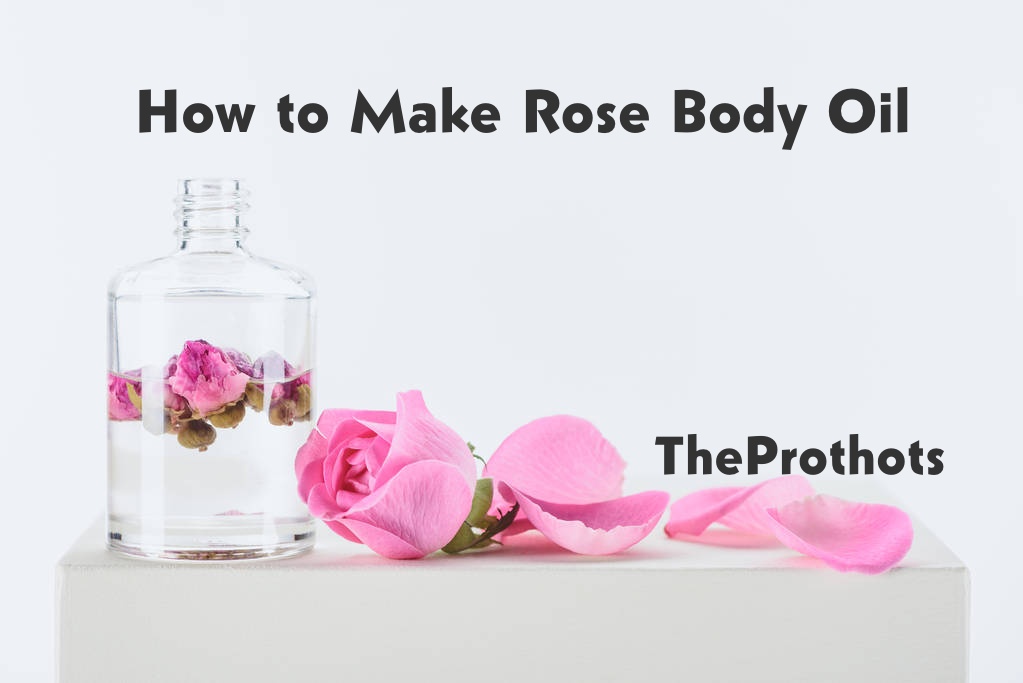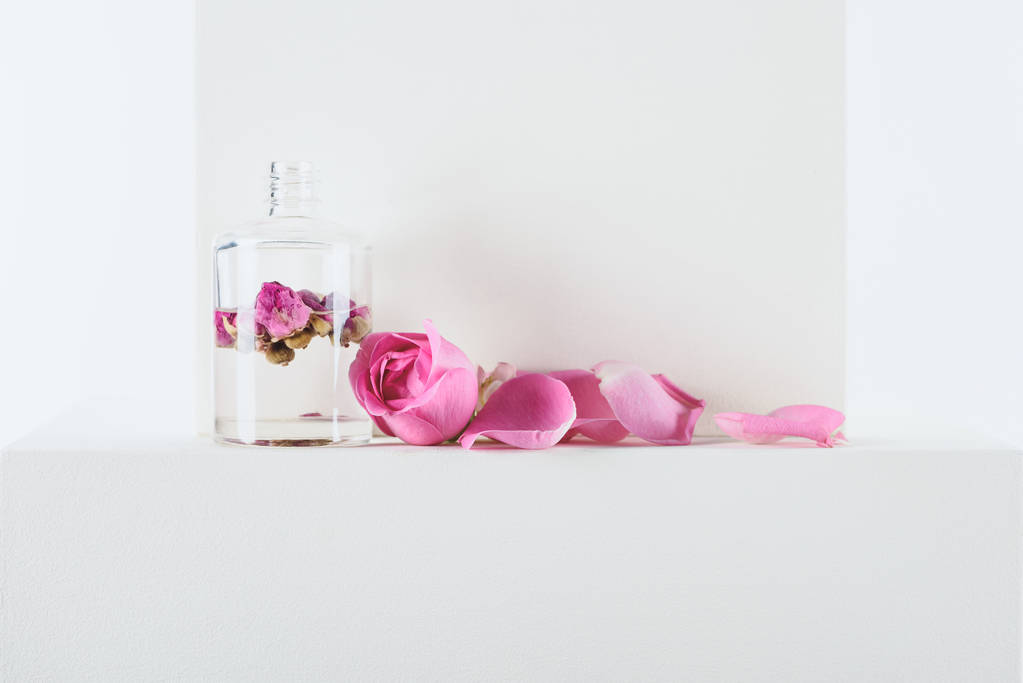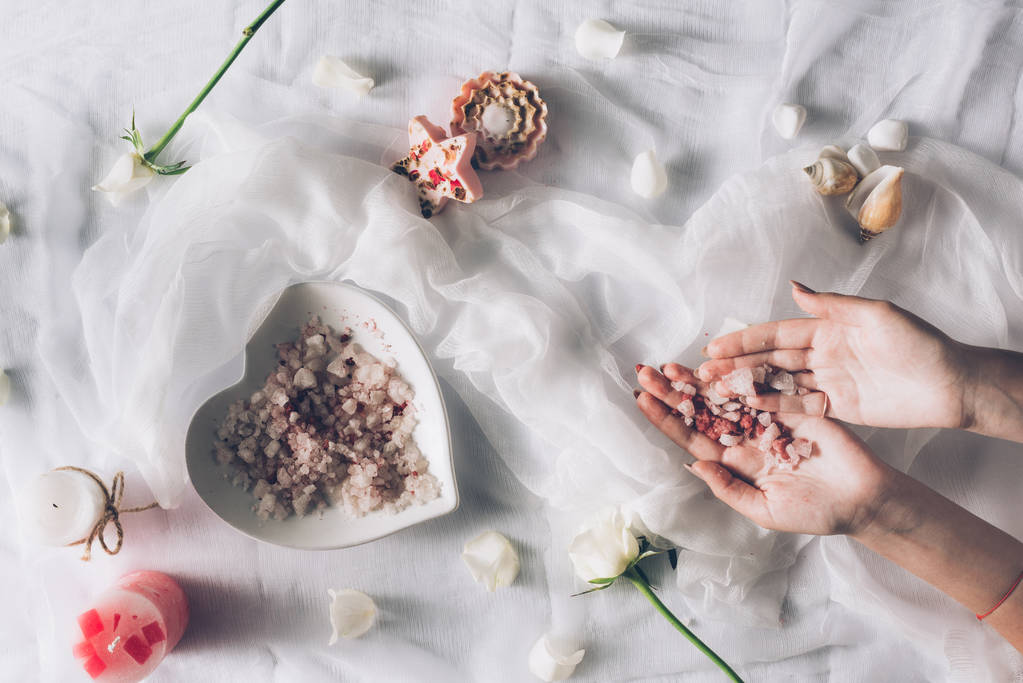Blog
How to Make Rose Body Oil – Guides Steps By Steps

Creating your own rose body oil can be both a rewarding craft project and a way to pamper your skin with natural ingredients. This guide will walk you through every step, from choosing the right roses and carrier oils to bottling and using your finished product. Along the way, you’ll find practical tips, clear examples, tables for comparison, and insights drawn from small-scale research and expert commentary to help you achieve a truly unique and effective rose body oil.
Rose In Oil

Making rose body oil at home brings together the gentle scent of roses and nourishing oils that smooth and soften the skin. This guide walks you through the steps in simple terms and offers practical tips, examples, and insights from experts. After each section, you’ll find a clear list or table to help you keep track of key points.
Understanding Rose Body Oil
Rose body oil is a blend of rose-infused carrier oils and (optionally) rose essential oil, designed to hydrate, soothe, and lightly scent your skin. Unlike store-bought versions, a homemade batch lets you control each ingredient and adjust the scent strength to your liking.
- Hydration: Carrier oils lock in moisture, helping maintain skin elasticity.
- Soothing: Roses contain natural compounds that calm irritation.
- Aroma: A subtle floral scent can boost mood and relaxation.
| Property | Benefit |
|---|---|
| Moisture Retention | Prevents dryness and flakiness |
| Anti-Inflammatory | Reduces redness and soothes skin |
| Antioxidants | Protects against environmental stress |
The Simple Magic of Homemade Body Oils
Homemade body oil turns a daily routine into a calm moment you look forward to. When you mix petals and oil, you slow your pace and give yourself time to breathe. There is no need for long ingredient lists—just a few simple items bring big benefits. Roses offer compounds that help soothe mild redness and add a gentle scent. Carrier oils like sweet almond or jojoba lock in moisture and leave your skin feeling soft without a greasy finish. Because you skip harsh chemicals and preservatives, your oil stays fresh for about four weeks. Writing the preparation date on the jar helps you track freshness. A small batch—around four to six ounces—lasts several weeks when used sparingly. You’ll notice your skin feels more supple, and the subtle fragrance lifts your mood. By choosing your ingredients carefully, you ensure each drop is pure and kind to both skin and senses.
What You’ll Need
Gather items you can find easily or may already have at home. First, choose a carrier oil that matches your skin type. Sweet almond oil works for normal or dry skin, jojoba oil suits oily or acne-prone skin, and fractionated coconut oil feels light on all types. Next, pick rose petals—fresh or dried—from a trusted source. If you harvest your own, rinse petals gently before use. You’ll also need essential oils like rose, patchouli, or ylang ylang for extra scent and skin benefits. Choose a small glass jar with a tight lid; Weck jars work well. A fine mesh strainer or cheesecloth helps remove petal bits later. Finally, grab a clean towel and a small pump bottle for storage. Keeping a simple journal or label lets you note the date and ingredients. With these tools on hand, you’re ready to make a custom oil that suits both your skin and your style.
Step-by-Step: Infusing Your Rose Oil
Follow these clear steps to create a richly scented oil. 1. Clean petals. Fill a bowl with cold water and float petals to remove dust. Lift petals gently and set on a towel to dry for about an hour. 2. Add carrier oil. Pour one-third to one-half cup of your chosen carrier oil into a glass jar, leaving room at the top. 3. Layer petals. Place dried petals in the jar so they sit loosely in the oil. 4. Add essential oils. Drop in four to six drops of rose essential oil and, if you like, two to three drops of patchouli or ylang ylang. 5. Seal and rest. Close the lid and keep the jar at room temperature, away from heat or direct sunlight. Let petals infuse for twenty-four hours. 6. Strain. Use cheesecloth or a fine mesh strainer to remove petal bits. 7. Store. Transfer the clear oil to a dark or amber bottle. Your rose body oil is ready and will last about four weeks in a cool place.
Bonus: Making Rose Water
Rose water adds a light spritz to your routine and can even flavor recipes. Start with petals from four or five roses. Rinse under lukewarm water to clear dust. Place petals in a large pot and pour just enough distilled water to cover them. Cover the pot and set to simmer on low heat. Watch petals as they lose their color, usually after ten to fifteen minutes. Turn off heat and let the liquid cool. Strain the liquid through a fine sieve or cheesecloth into a clean bottle. Label with the date. Use rose water as a face mist to help balance moisture, as a toner to refresh skin, or as an ingredient in drinks and desserts like rice pudding or lemonade. Store in the fridge for up to two weeks. This simple water brings rose benefits in a light form that is easy to enjoy every day.
Spotlight on Rose Essential Oil
Rose essential oil is prized for its gentle plant compounds, but it takes over 10,000 petals to make a single small bottle. To preserve its delicate scent and benefits, roses must be distilled the same day they are picked. This oil helps balance moisture in your skin, soften fine lines, and brighten tone. After a long day, massage a few drops into dry areas—hands, elbows, or neck—and wrap a warm cloth for a soothing mini treatment. Because it is pure, a little goes a long way. A 1% dilution in your carrier oil offers a noticeable scent without irritation. Certified aromatherapist Sarah Khan says, “Rose oil connects us to simple plant power. Its scent calms the mind and soothes skin after sun or stress.” Using high-quality rose oil ensures your homemade blend offers real benefits rather than artificial fragrance.
A Note on Ylang Ylang
Ylang ylang comes from a tropical tree and yields star-shaped flowers with a sweet, creamy scent. In many cultures, ylang ylang is part of wedding ceremonies and rituals because its aroma is thought to lift spirits and ease tension. In aromatherapy, it pairs well with rose oil to balance mood. To include ylang ylang in your body oil, add no more than one drop per teaspoon of carrier oil. This oil helps smooth skin texture and can support healthy-looking tone. Whether you blend it with rose for a light floral mix or pair it with patchouli for a deeper scent, ylang ylang offers a subtle creaminess that enhances your homemade oil’s feel and fragrance.
Why Patchouli Deserves a Place, Too
Patchouli, a leafy mint-family plant, brings a rich, earthy sweetness to your blend. You may recognize its scent from perfumes and candles. On skin, patchouli oil offers gentle astringent qualities that help reduce the look of blemishes and fine lines. It also has natural anti-inflammatory compounds that can calm irritation after sun exposure. To use patchouli, add one drop per teaspoon of your base oil. The musky tone of patchouli balances the bright floral notes of rose and ylang ylang, creating an oil that is grounding as well as uplifting. Herbalist Amir Shah explains, “Patchouli’s warm scent and skin benefits make it a natural partner in body oils. It supports clear, smooth skin while offering a mood-stabilizing aroma.”
How to Enjoy Your Rose Body Oil

Using your homemade oil becomes a daily self-care treat. After showering, pat skin dry until slightly damp and warm two to three drops between your palms. Glide the oil over arms, legs, and torso in gentle strokes. For dry spots like elbows or heels, apply a bit more and massage in small circles. Keep a small bottle by the sink and rub a drop into your hands after washing to help protect against dryness. At bedtime, warm a few drops on your fingertips and press gently into pulse points—neck, wrists, and temples—to unwind. Whenever you need a moment of calm, lift the bottle to your nose and inhale slowly. The blend of rose, ylang ylang, and patchouli works together to soften skin and ease stress, creating a simple ritual you look forward to every day.
Why Rose Body Oil Choose Well
Rose petals carry natural compounds that calm irritation and add light scent. When infused into a carrier oil—like sweet almond or jojoba—the active benefits move from petals to skin. Certified aromatherapist Jane Patel notes, “The gentle molecules in rose petals ease redness and add a soft tone to any oil blend.”
- Rose compounds help reduce mild swelling.
- Carrier oils lock in moisture.
- Mild fragrance lifts mood gently.
| Benefit | How It Helps |
|---|---|
| Anti-inflammatory | Reduces minor redness |
| Moisture lock | Keeps skin soft for hours |
| Light scent | Offers calm without overwhelming |
Choosing Your Rose Petals
The best petals come from roses grown without chemicals. Look for organic or home-grown blooms picked just after morning dew. Wild-crafted roses from a trusted source work too, but always check for residue.
- Organic garden roses
- Wild rose petals (harvested safely)
- Herb shop dried petals (look for pesticide-free label)
| Source Type | Pros | Cons |
|---|---|---|
| Garden roses | Fresh, high scent | Seasonal availability |
| Wild roses | Natural, free | Risk of contamination if unclear |
| Dried from herb shop | Year-round, tested for purity | May lack strong fragrance |
Picking a Carrier Oil
Carrier oils form the base that carries rose extracts onto your skin. Choose one that feels light and fits your skin type.
- Sweet almond oil: Soft feel, good for most skin types
- Jojoba oil: Closest to skin’s natural oil, ideal for oily or acne-prone skin
- Argan oil: Rich in vitamin E, best for dry skin
| Carrier Oil | Skin Type Suitability | Texture |
|---|---|---|
| Sweet almond | Normal, dry | Light, smooth |
| Jojoba | Oily, acne-prone | Very light |
| Argan | Very dry | Slightly heavier |
Tools and Equipment You Need
Gather simple items you likely have in your kitchen or can buy cheaply.
- Glass jar with a tight lid
- Fine mesh strainer or cheesecloth
- Dark glass storage bottles
- Wooden spoon (avoid metal)
| Item | Purpose |
|---|---|
| Glass jar | Infusion container |
| Mesh strainer | Removing petal bits |
| Dark bottle | Keeps light-sensitive oils fresh |
| Wooden spoon | Gentle stirring without reaction |
Preparing Your Petals
Fresh petals should be rinsed gently to remove dust. Spread them on a clean towel until nearly dry. Too much water lowers oil quality.
- Rinse quickly under cool water.
- Lay flat on towel, pat dry.
- Use within a few hours for best results.
| Step | Action |
|---|---|
| Rinse | Use cold water |
| Dry | Pat with towel |
| Wait | Ensure no moisture remains |
Infusing the Oil (Warm Method)
The warm method speeds up infusion but needs close attention.
- Fill jar halfway with petals.
- Pour carrier oil until petals are fully covered.
- Seal jar and place on a sunny windowsill for 24–48 hours.
- Gently swirl jar twice daily.
| Step | Detail |
|---|---|
| 1. Layer petals | Loose, do not pack tightly |
| 2. Cover with oil | Leave at least 1 cm headspace |
| 3. Sun exposure | 1–2 days, out of direct harsh heat |
| 4. Swirl | Morning and evening to mix gently |
Infusing the Oil (Slow Method)
For deeper scent, you can let the oil sit longer at room temperature.
- Layer petals and oil in jar.
- Store in a cool, dark place for 2–4 weeks.
- Swirl jar gently every other day.
| Duration | Swirl Frequency | Expected Outcome |
|---|---|---|
| 2 weeks | Every 2 days | Mild scent, light color |
| 4 weeks | Every 2 days | Strong fragrance, deeper hue |
Straining and Finishing
Straining removes solid pieces, leaving clear, fragrant oil. A second strain improves clarity.
- Place cheesecloth over a bowl.
- Pour oil and petals slowly.
- Gather cloth edges, squeeze gently.
- Repeat straining if bits remain.
| Step | Tool | Tip |
|---|---|---|
| Primary strain | Cheesecloth | Do not wring too hard |
| Secondary strain | Fine mesh strainer | Catch remaining tiny particles |
Adding Enhancements
You may include a few drops of essential oil or vitamin E for added benefits. Keep additions under 2% of total volume.
- Lavender essential oil: Calming extra scent
- Vitamin E oil: Natural preservative, skin support
- Frankincense essential oil: Ancient skin tone aid
| Enhancement | % of Total Oil | Benefit |
|---|---|---|
| Lavender EO | 1–2% | Extra calm scent |
| Vitamin E | 0.5–1% | Antioxidant, helps preserve oil |
| Frankincense EO | 0.5–1% | May firm skin tone |
Quality Checks
Before using, test a small amount on inner wrist to check for irritation. Note the oil’s color and scent.
- Patch test on wrist
- Check for spots or cloudiness
- Smell: fresh, sweet rose aroma
| Check | What to Watch For |
|---|---|
| Skin reaction | No redness, itching |
| Clarity | Clear, no sediment |
| Smell | Pleasant rose, no rancid note |
How to Use Rose Body Oil
Use after shower or bath on slightly damp skin for best absorption.
- Warm 3–5 drops between palms.
- Rub gently on arms, legs, and torso.
- Massage areas that feel dry or tense.
| Usage Moment | Amount | Technique |
|---|---|---|
| Post-shower | 5 drops | Rub evenly |
| Dry patches | 3 drops | Focused massage |
| Hand massage | 2 drops | Concentrate on cuticles |
Storage and Shelf Life
Store in a cool, dark cabinet. Properly stored oil lasts up to six months.
- Keep cap tight to limit air exposure.
- Check scent monthly for signs of rancidity.
| Condition | Best Practice |
|---|---|
| Light exposure | Use dark bottles |
| Temperature | Store below 25°C (77°F) |
| Air exposure | Minimize by filling bottles fully |
Customizing Your Blend
You can adjust the strength of rose scent by changing petal amount or infusion time. For a lighter aroma, use fewer petals or a shorter infusion.
- Use half petals for subtle scent.
- Double petals for strong fragrance.
- Infuse 1 week for light tone, 4 weeks for strong.
| Variation | Petal Quantity | Infusion Time |
|---|---|---|
| Light scent | 25 grams | 1 week |
| Medium scent | 50 grams | 2 weeks |
| Strong scent | 75 grams | 4 weeks |
Tips for Finding Quality Ingredients
Local flower markets sometimes carry garden-grown roses. Always ask growers about pesticide use.
- Visit farmer’s markets early morning.
- Check labels in bulk herb stores.
- Grow a small rose plant at home.
| Source | Advantage | How to Verify |
|---|---|---|
| Farmer’s market | Fresh, local | Ask about growing methods |
| Herb store | Year-round supply | Look for organic certification |
| Home garden | Full control | Self-monitor plant health |
Expert Insight: Preserving Natural Scent
“Cold infusion keeps heat-sensitive compounds intact,” says biochemist Dr. Lila Ahmed. She suggests slow methods for best fragrance retention.
- Avoid high heat to protect aroma
- Stir gently to prevent foam
- Monitor color change as a sign of readiness
| Expert Tip | Reason |
|---|---|
| Cold infusion for scent | Preserves heat-sensitive molecules |
| Gentle stir without foam | Keeps oil clear, avoids oxidation |
Example Variations for Skin Types
Dry skin may benefit from adding avocado oil, while oily skin could use more jojoba.
- For dry: mix 80% almond oil + 20% avocado oil
- For oily: mix 70% jojoba oil + 30% rose petal oil
- For combination: 50% sweet almond + 50% jojoba
| Skin Type | Recipe Mix |
|---|---|
| Dry | 80% sweet almond, 20% avocado |
| Oily | 70% jojoba, 30% rose oil |
| Combination | 50% sweet almond, 50% jojoba |
Safety Precautions
Always label your jar with date and ingredients. Keep away from children and pets.
- Use food-grade containers only.
- Store out of reach of children.
- Discard if scent turns sour.
| Precaution | Action Required |
|---|---|
| Labeling | Note date and blend |
| Child safety | Store high or locked cabinet |
| Quality check | Smell monthly, discard when off |
Tracking Your Batches
Keep a simple journal with batch number, ingredients, and date. This helps identify best results.
- Batch #001: 50g petals, 100ml almond, infused 2 weeks.
- Batch #002: 25g petals, 100ml jojoba, infused 3 weeks.
| Batch | Petals (g) | Oil Type | Time | Notes |
|---|---|---|---|---|
| 001 | 50 | Sweet almond | 2 weeks | Mild color, soft scent |
| 002 | 25 | Jojoba | 3 weeks | Clear, gentle aroma |
Common Questions Answered
- Can I reuse petals? No, petals lose compounds after one use.
- Why is my oil cloudy? Might need a second strain step.
- Can I mix other flowers? Yes, but research interactions.
| Question | Quick Answer |
|---|---|
| Reuse petals? | No |
| Cloudy oil fix? | Strain again |
| Add other flowers? | Yes, test small batch first |
Final Thoughts
Creating rose body oil at home connects you with simple ingredients and your own creativity. With a bit of patience and care, you’ll have a custom oil that soothes and scents every time you use it. Keep experimenting, track your results, and enjoy the gentle touch of roses on your skin.
